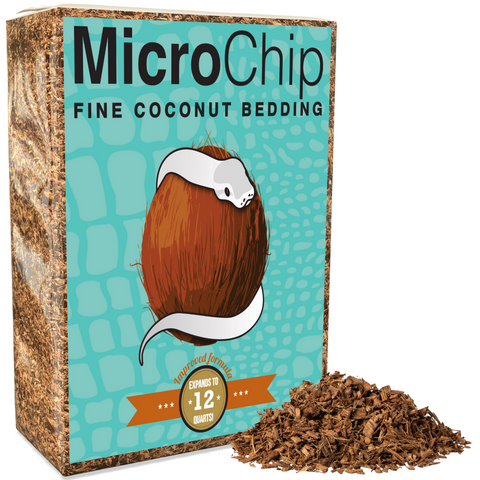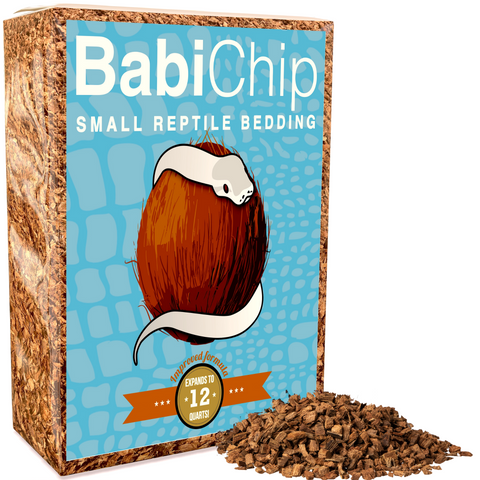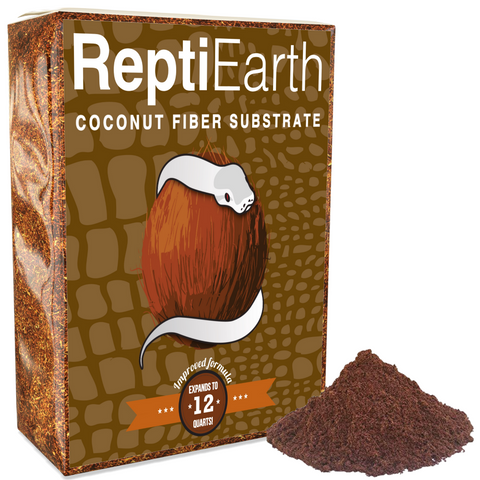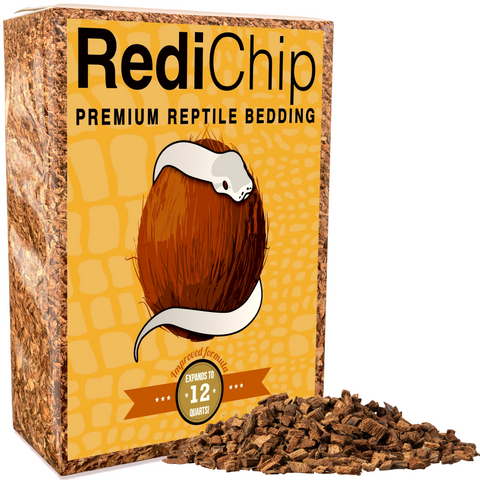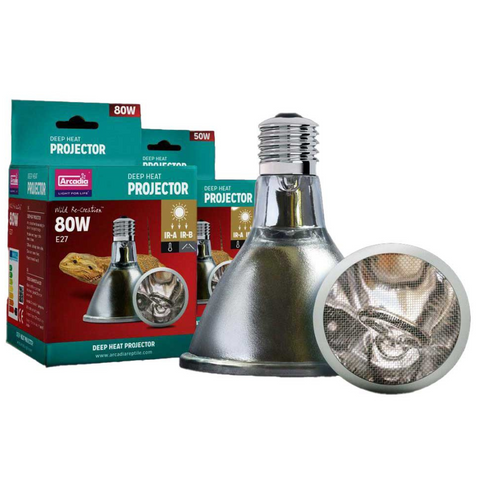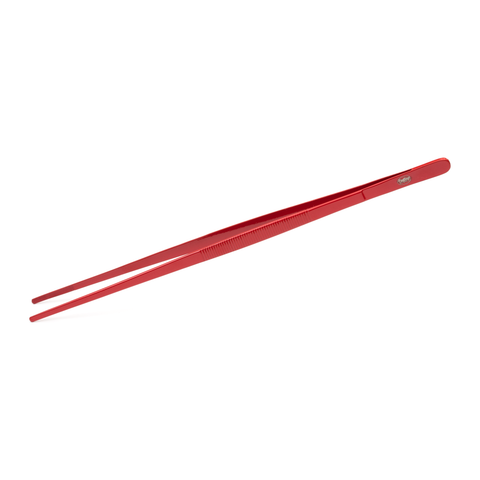Corn Snake
Pantherophis guttatus
Natural History
The corn snake is a nonvenomous, constricting colubrid native to the southeastern United States, most commonly found in habitats such as pine forests, overgrown fields, rocky outcrops, farmland, and the edges of woodlands. Their striking pattern and calm disposition have made them one of the most commonly kept pet snakes, but their true ecological significance lies in the wild. Understanding the corn snake’s biology and behavior in its natural environment helps lay a strong foundation for replicating appropriate conditions in captivity.
Corn snakes begin life as hatchlings emerging from clutches laid during the spring and early summer months. Female corn snakes typically lay between 10 and 30 eggs per clutch, with the eggs being deposited in moist, hidden areas such as rotting logs, leaf litter, or underground burrows. The eggs incubate for 55 to 70 days depending on environmental temperatures, generally hatching when the ambient temperature remains consistently between 78°F and 85°F. There is no parental care after the eggs are deposited; hatchlings are fully independent upon emergence and begin feeding and defending themselves without assistance. Hatchlings measure around 10 to 15 inches long and grow steadily over the first few years of life. Growth is influenced by food availability, with individuals reaching sexual maturity in approximately 18 to 36 months. Adult corn snakes typically average between 3.5 and 5 feet in length, though some may reach up to 6 feet. In the wild, their lifespan averages 6 to 8 years, but under managed captivity they can live 15 to 20 years with proper care.
Corn snakes exhibit primarily crepuscular and nocturnal activity patterns, though juvenile snakes and adults during cooler weather may be active during the day. These snakes are solitary and highly secretive, spending much of their time hidden beneath logs, within rock crevices, or burrowed in leaf litter. Corn snakes are non-aggressive and depend on stealth and their natural camouflage to avoid predation. When disturbed, they may vibrate their tails rapidly against dry leaves in mimicry of rattlesnakes or give off a musky odor as a deterrent. Their primary means of hunting is constriction. Using a strong sense of smell and heat-sensitive scales on their face, they locate small vertebrate prey such as rodents, lizards, and frogs. Once prey is captured, the corn snake rapidly coils its body around it and tightens until the prey succumbs. Juveniles often feed on anole lizards or tree frogs, transitioning to mammals such as mice and voles as they grow.
In the wild, corn snakes play a significant ecologic role in rodent population control, often acting as a natural form of pest management around agricultural areas. Their presence helps maintain the balance of ecosystems by reducing the numbers of invasive or harmful small mammals. In turn, corn snakes are prey for a variety of larger predators, including birds of prey such as hawks and owls, as well as mammals like raccoons, foxes, and feral cats. Their bright coloration, which in the wild includes a pattern of reddish-orange blotches on a base of gray or tan, serves both as camouflage among leaf litter and deters some predators that mistake them for venomous species. Their ability to climb trees, swim, and burrow gives them access to a wide variety of ecological niches and shelter options, allowing them to thrive in everything from semi-arid pine savannas to dense forest undergrowth.
Understanding the natural history of corn snakes illuminates their adaptability and resilience. As ectothermic reptiles, their survival depends heavily on access to appropriate microclimates within their environment for thermoregulation. Their behavioral and physiological adaptations not only allow them to navigate predator-prey dynamics effectively but also enable them to thrive across a wide geographic range. This makes them both an essential part of their native ecosystems and a species well-suited to captive environments when proper care replicates these natural conditions.
Conservation Status
The corn snake is classified as a species of Least Concern on the IUCN Red List. This designation signifies that the species currently maintains a stable and widespread population across its native range in the southeastern United States. As a species of Least Concern, corn snakes exhibit robust ecological health, occupy a broad habitat range, and show no immediate risk of significant population decline. They are adaptable to a variety of ecosystems, including pine forests, overgrown fields, rocky hillsides, and abandoned farm structures. This adaptability contributes significantly to their resilience, allowing them to thrive in environments that have been altered by human activity.
However, despite their favorable conservation status, corn snakes are subjected to several threats in the wild that, if left unchecked, could impact their populations over time. Habitat destruction remains one of the leading concerns, particularly due to urban development, agriculture, and deforestation in the southeastern regions of the United States. As natural habitats are fragmented or converted to roads and residential areas, corn snakes lose access to crucial shelter, prey, and breeding areas. Additionally, road mortality is a significant localized threat, as these snakes are often killed while crossing roadways, especially during seasonal movements.
Another major factor is the illegal collection of wild individuals for the pet trade. Although corn snakes are widely bred in captivity today, some collectors still remove wild specimens, which can contribute to population stress—particularly in regions where numbers may already be lower due to habitat pressures. Misidentification by the public as venomous snakes has also led to persecution and unnecessary killing of corn snakes. This is exacerbated by their superficial resemblance to more dangerous species, such as the copperhead, especially in areas where public education about native snake species is limited.
Conservation efforts for the corn snake are largely focused on habitat protection and public education. Many of the habitats they rely on are protected within state parks, wildlife management areas, and privately conserved lands. Management of these lands to preserve native vegetation, maintain ground cover, and limit widespread pesticide use supports healthy corn snake populations by preserving their prey base and reducing exposure to harmful chemicals. Roadway mortality mitigation, such as wildlife corridors or underpasses, though not species-specific, may also benefit corn snakes when implemented in key areas.
Legal frameworks contribute to the species’ protection, with some states enforcing regulations on the collection, sale, and ownership of native reptiles. In states like Georgia and Florida, for example, collecting wild corn snakes without appropriate permits is restricted, helping reduce pressure on wild populations. Captive breeding programs have proven especially successful with this species. Today, nearly all corn snakes in the pet trade are captive bred, with decades of selective breeding producing a wide range of color and pattern morphs. This reduces demand for wild-caught specimens and plays a role in conserving wild populations.
Although there are no large-scale reintroduction efforts for corn snakes, the widespread availability of captive-bred individuals helps preserve genetic diversity and can serve as a safeguard in the event of unforeseen population declines. Furthermore, public outreach programs and conservation education initiatives sponsored by herpetological societies and wildlife agencies continue to promote the importance of native snake species. By increasing public understanding and reducing fear of snakes, such efforts indirectly improve the conservation outlook for corn snakes in the wild. While the species is currently secure, long-term conservation will depend on continued habitat stewardship, responsible pet ownership, and public engagement.
Native Range
The corn snake is native to the southeastern United States and has a relatively broad geographic range that extends from southern New Jersey south through Florida and westward to eastern Louisiana and parts of eastern Texas. The densest populations are found throughout the southeastern coastal plains, particularly in states like Georgia, South Carolina, Alabama, and northern Florida. Within this range, corn snakes inhabit a variety of ecosystems but are most commonly associated with habitats that offer both ample ground cover and access to edge environments, where different habitat types meet.
In terms of macrohabitat, the corn snake is typically found in temperate deciduous forests, pine flatwoods, palmetto scrublands, and mixed hardwood-pine forests. These ecosystems provide the right balance of cover, humidity, and prey availability. The edge habitats between forests and open grasslands or agricultural fields are particularly favorable, as they support abundant populations of small mammals and birds on which the corn snake preys. They are also frequently found in abandoned buildings, barns, and farmlands, especially when these structures are near wooded areas—demonstrating the species' adaptability and tolerance for moderately disturbed environments.
Microhabitat preferences are more specific and include areas with abundant ground cover such as fallen logs, thick leaf litter, rock piles, and dense vegetation. Corn snakes are secretive by nature and rely on these microhabitats for concealment and thermoregulation. In areas where the soil is loose and sandy, they may take advantage of rodent burrows or dig shallow retreats to escape predators and extreme temperatures. They are known to spend a significant portion of the day hidden beneath surface debris, becoming more active during the crepuscular (dawn and dusk) hours when conditions are cooler and prey is more active.
Climatically, the corn snake favors warm, humid environments. Within its native range, summer daytime temperatures typically range from 80 to 90°F, with nighttime lows between 65 and 75°F. Humidity levels fluctuate with the seasons but are often moderate to high, especially in forested and coastal areas. Annual precipitation varies depending on the specific region but generally falls between 40 to 60 inches, with the wettest months occurring from late spring through summer. Seasonal activity patterns are strongly influenced by temperature; corn snakes are most active from late spring to early fall and enter a state of brumation during the cooler months, typically from November through February. During brumation, they seek out protected underground retreats where temperatures remain stable, usually between 50 and 60°F.
Elevation-wise, corn snakes are most commonly found in lowland environments, ranging from sea level up to around 2,000 feet. While sporadic sightings have occurred at higher elevations, especially on the Appalachian foothills, they are most prevalent in flatter terrains with moderate elevation where temperature fluctuations are less extreme and prey density is high.
Key environmental factors essential for the survival of corn snakes include abundant small vertebrate prey, particularly rodents and small birds, as well as reliable sources of cover and shelter. Access to shallow freshwater sources is beneficial but not always essential, as corn snakes can obtain sufficient hydration from their prey. Soil composition also plays a role; loose, well-drained substrates are preferred for thermoregulation and retreat building. Furthermore, vegetative cover, such as long grasses, underbrush, and leaf litter, is crucial for both predator avoidance and effective ambush hunting. These habitat features must be preserved for wild populations to remain viable and for successful captive replication.
Behavior
Corn snakes are primarily crepuscular in the wild, meaning they are most active during dawn and dusk. This activity pattern provides natural camouflage from both predators and prey, taking advantage of lower light conditions. However, their behavior can adapt depending on environmental conditions. In hotter climates or during warm seasons, corn snakes may shift to nocturnal activity to avoid overheating. During the cooler months, particularly in fall and winter, wild corn snakes enter a state of brumation—a period of metabolic slowdown similar to hibernation. During brumation, which can last several weeks to months depending on the regional climate, the snakes seek refuge in underground burrows or beneath decaying logs where temperatures are stable and slightly above freezing.
Corn snakes are solitary reptiles by nature. Individuals are typically only encountered together during the breeding season in spring, after brumation ends. Mating involves ritualized behavior, including tongue-flicking, alignment of the bodies, and cloacal contact. Males may engage in combat displays if more than one is attracted to a receptive female, though serious injury is rare. Corn snakes do not exhibit parental care; after oviposition, the female lays a clutch of eggs—typically between 10 to 30—in a warm, moist environment such as decaying leaf litter or rotting logs and then departs. Hatchlings are fully independent at birth.
Corn snakes are sensitive to environmental stimuli and use chemoreception extensively through Jacobson’s organ to detect prey, predators, and conspecifics. They rely heavily on tongue-flicking to sample particulate matter from the environment, a behavior that increases noticeably when prey is nearby or when exploring a new area. They are highly responsive to temperature gradients and will actively seek out warmer or cooler microhabitats to regulate their internal body temperature—a process known as behavioral thermoregulation. Light cycles also influence their activity, and sudden changes in photoperiod can alter feeding and behavior patterns. High humidity or sudden drops can cause restlessness or even respiratory issues, especially in captive settings.
When confronted with potential threats, corn snakes exhibit several defensive behaviors. Their initial response is to flee and hide. If escape is not an option, they may employ bluffing tactics such as tail vibration, which can mimic the sound of a rattlesnake when conducted in dry leaf litter. They may also flatten their bodies and strike as a warning, though actual bites are uncommon. Camouflage is a primary defense strategy; their reddish-orange and gray body pattern blends well with fallen leaves and forest litter, reducing detection. Although non-venomous, corn snakes are constrictors and subdue prey—typically small rodents, lizards, or frogs—by rapid strikes followed by tight coiling.
Unique to corn snakes is their climbing ability, facilitated by muscular bodies and keeled ventral scales that provide extra grip. While primarily terrestrial, they are capable climbers and may explore low shrubs or trees in search of prey or refuge. Their locomotion is typically rectilinear or serpentine, depending on the substrate. Thermoregulatory behavior in captivity often includes basking under heat sources during the morning and retreating to cooler hides later in the day, mimicking their wild crepuscular rhythms.
In captivity, corn snakes generally become more tolerant of human presence and are among the least aggressive of all colubrids. Their feeding behavior is more consistent than in the wild due to regular, controlled schedules and environmental stability. However, the absence of environmental complexity can lead to reduced exploratory behavior unless enrichment is provided. Snake-safe climbing structures, substrate variation, and hidden feeders have been shown to enhance activity levels and reduce stress. Aggression and defensive displays are minimal in well-acclimated individuals, though stress responses—such as excessive hiding or restlessness—can occur if husbandry parameters (such as temperature or humidity) deviate from species-specific needs.
Comparatively, captive corn snakes tend to feed more reliably and exhibit less flight avoidance than their wild counterparts. However, captivity can suppress certain behaviors, such as seasonal brumation, unless artificially induced. While breeding in captivity typically lacks the spatial and competitive dynamics of wild encounters, copulatory behavior remains largely instinctual. Overall, thoughtful captive care that mimics natural conditions supports the expression of a wider range of native behaviors and contributes significantly to the longevity and well-being of corn snakes in human care.
Captivity Requirements
Enclosure Design
For corn snakes, enclosure size should vary based on age and adult length. Juveniles can be housed in cages approx 24”x18”x18”. However, they grow quickly and will need progressively larger habitats as they reach adulthood. Adult corn snakes, which typically average between 4 and 5 feet in length, require a minimum enclosure size of 36” long by 18” wide and 18” tall. Larger enclosures are always beneficial as they allow for more exercise and enrichment opportunities. Horizontal space takes priority over vertical height, as corn snakes are primarily terrestrial but will use vertical structures for climbing if available.
The ideal enclosure should be constructed from durable materials that retain heat well yet allow appropriate ventilation. PVC and high-density plastics are highly recommended for their mold resistance, ease of cleaning, and insulation capabilities. Glass tanks can be used but may struggle with heat and humidity control in certain climates. Screen tops should be limited or secured with heat- and humidity-retaining covers, especially in drier environments. Ventilation should be well-designed to prevent stagnant air without excessively lowering humidity.
Interior design should replicate elements of the corn snake’s natural temperate woodland and edge habitat. Include a tight-fitting hide on both the warm and cool ends of the tank to reduce stress and support thermoregulation. Flat basking surfaces such as slate or wood platforms should be placed under the heat source. Climbing enrichment should include sturdy branches, driftwood, or shelves. Include artificial or live plants to offer visual barriers, which help the snake feel secure. All access points must latch securely; sliding or hinged doors should have locks to prevent escape, as corn snakes are skilled at testing openings and squeezing through any available gaps.
Lighting and Heating
Corn snakes benefit from a full temperature gradient to allow proper thermoregulation. The warm side of the enclosure should feature a basking site maintained between 88°F and 92°F. Ambient temperature across the remainder of the enclosure should be kept between 75°F and 82°F during the day. Nighttime drops are tolerated well by this species, with temperatures falling no lower than 70°F. All heat sources must be regulated using a reliable thermostat to prevent dangerous overheating. Under-tank heating pads (on thermostats), radiant heat panels, or ceramic heat emitters are acceptable methods of providing constant background heat. Never use heat rocks, as they are known to cause burns and do not allow safe temperature regulation.
Though corn snakes do not require UVB to survive, evidence supports that low-level UVB exposure offers health and behavioral benefits. A 6% UVB fluorescent tube mounted within 12 inches of the basking area can enhance vitamin D3 synthesis, improve appetite, and mimic natural photoperiods. Ensure that any bulb used is designed for reptiles and replaced according to manufacturer recommendations, typically every 12 months. UVB bulbs must be placed above a screen top or within the enclosure, never obstructed by glass or plastic, which block UV radiation. Provide 10 to 12 hours of light daily to simulate a normal photoperiod. Seasonal adjustments to the photoperiod—minor reductions in winter and increases in spring—can support natural rhythms and may enhance breeding behavior in adults.
Substrate and Enrichment
Corn snakes naturally inhabit areas with leafy ground cover, loose soil, and occasional woody debris. To mimic their environment and provide enrichment opportunities, suitable substrates include finely chipped wood products or naturalistic mixes. ReptiChip’s fine-grade coconut husk blends support moderate humidity retention and are easy to spot-clean. For keepers preferring tropical-style setups, mixes of ReptiChip and ReptiEarth provide a soft, diggable medium that also retains moisture well and supports burrowing behaviors. Loose substrates help prevent scale abrasions and allow snakes to exhibit natural hiding and thermoregulating instincts. Avoid substrates with sharp edges or those known to cause impaction, such as sand or gravel. Reptile carpet should never be used, as it harbors bacteria, offers no enrichment value, and can be abrasive to scales.
Enrichment elements should encourage exploratory behavior and environmental interaction. Corn snakes are naturally curious and benefit from a habitat that includes climbing opportunities, such as anchored branches or artificial vines, as well as layers of ground cover that encourage investigating behavior. Cork bark sheets or tubes, half logs, and rock caves serve as excellent hides and basking platforms. At least two hides are essential, positioned on opposite ends of the temperature gradient to allow the snake to feel secure while thermoregulating. Regular rearrangement of enclosure decor and the addition of new structural elements help stimulate mental engagement and reduce boredom. Foraging enrichment, such as scent trails or hidden prey items, can be occasionally introduced to simulate natural hunting instincts.
Humidity and Hydration
Corn snakes thrive in moderate humidity levels between 40% and 60%. Humidity should remain consistent within this range, with occasional increases during shedding periods. Use a reliable digital hygrometer with a probe placed near the ground level or within a hide to accurately monitor humidity. Wild corn snakes experience fluctuations in humidity associated with rainfall, so providing microclimate options within the enclosure supports healthy skin and respiratory function.
To maintain optimal humidity, daily misting may be necessary in arid environments, especially if the ambient humidity outside the tank is low. Use a fine spray to lightly mist the enclosure without saturating the substrate. For added consistency, automated misting systems or ultrasonic foggers, placed on timers, can provide controlled humidity boosts during dry periods. Hydration can also be supported through the use of humidity-retaining substrates such as ReptiChip and ReptiEarth mixes, especially in deeper layers of the enclosure. Including a humid hide, lined with damp sphagnum moss or substrate, provides the snake with a high-humidity microenvironment that is particularly beneficial during shedding cycles.
Fresh water must be available at all times in a sturdy, tip-resistant dish large enough for the snake to curl into if desired. Corn snakes may soak themselves occasionally, especially when preparing to shed. Change water daily to prevent bacterial growth and clean the bowl with veterinary-safe disinfectant weekly or more often if contaminated. While corn snakes may occasionally drink from droplets after misting, they primarily hydrate through the water bowl. Observing drinking behavior can be infrequent, so consistent access to clean water is paramount to prevent dehydration, which can lead to digestive or shedding complications.
Diet & Supplementation
Corn snakes are carnivorous reptiles that primarily feed on small vertebrates. In their natural habitat, which includes southeastern areas of the United States, corn snakes exhibit an opportunistic feeding pattern. They primarily prey on small rodents such as young mice and rats, which make up the bulk of the adult snake's diet. Juvenile corn snakes, being smaller and more vulnerable, tend to consume smaller prey items such as lizards, amphibians like tree frogs, and even nestling birds. Occasionally, they may also prey on reptile eggs or small invertebrates, although these items represent a small fraction of their overall diet. Their status as generalist feeders allows them to adapt to different environmental conditions and prey availability.
Corn snakes are primarily active foragers, though they occasionally ambush prey if the opportunity arises. These snakes do not possess venom but subdue their prey using constriction. Once the prey is located—typically through chemoreception using their forked tongue and Jacobson's organ—the snake strikes, coils around its victim, and applies sufficient pressure to induce circulatory arrest. While vision plays a minor role in prey detection, corn snakes rely heavily on chemical cues for locating and identifying prey. Unlike some other colubrid species or pit vipers, corn snakes do not have heat-sensing pits and cannot detect infrared radiation. They often hunt at dusk and during the night, making them crepuscular to nocturnal predators, especially in warmer seasons.
Dietary needs and feeding behavior in corn snakes can change with age and seasonal variations. Hatchlings and juveniles have faster metabolisms and should be offered appropriately sized prey more frequently, typically every 5 to 7 days. As snakes mature, their metabolism slows, and adults generally thrive on feeding intervals of 7 to 14 days depending on size, age, and activity level. In wild settings, feeding opportunities may be more sporadic, especially during cooler months when metabolic rates drop and prey scarcity increases. During brumation, a period of dormancy in colder months, wild corn snakes reduce or entirely cease feeding. Though this is not strictly necessary in captivity, some keepers simulate this cycle for breeding purposes.
In captivity, a corn snake's diet should closely mimic its natural prey profile to ensure optimal health and nutrition. Feeder mice—specifically thawed frozen specimens—are the standard food item provided in captivity. These offer a complete nutritional profile when appropriately sized and fed at proper intervals. Pre-killed frozen/thawed prey is strongly recommended over live feeding to prevent injury to the snake. Nutritional supplementation, such as calcium or vitamin D3, is generally not necessary if mice or rats are the primary diet source, as these rodents already contain adequate nutrient profiles when fed whole. However, for younger snakes or those fed less optimal prey, dusting with calcium once or twice monthly can help support bone development.
Feeding challenges in captivity are not uncommon and may include food refusal, especially during shedding cycles, post-brumation, or periods of stress. Improper environmental conditions—such as incorrect temperatures or lack of secure hiding areas—can also suppress appetite. Obesity is a growing concern in captive corn snakes and often results from overfeeding or offering prey items that are too large or too frequent. Conversely, underfeeding or consistently offering prey items with inadequate nutritional content (such as producing or relying too heavily on feeder insects for juveniles) may lead to malnutrition and stunted growth.
To encourage natural feeding behavior and avoid dietary monotony, keepers can introduce variety in prey types (e.g., alternating between mice and appropriately sized rats) and simulate hunting scenarios using feeding tongs to replicate movement. Feeding environments should be stress-free, quiet, and at the correct temperatures—ideally with a thermal gradient allowing basking around 85°F and cooler areas down to 75°F. Including enrichment such as artificial foliage, tunnels, and multiple hides can further promote natural foraging behaviors and reduce feeding-related stress. Monitoring body condition and feeding response at regular intervals allows keepers to make informed adjustments to diet and husbandry practices, ensuring the long-term health and vitality of their corn snake.
Reproduction
Corn snakes reach reproductive maturity at approximately 18 to 24 months of age in captivity, although some individuals may mature slightly later depending on their growth rate and overall health. Sexual dimorphism is relatively subtle in this species, but females tend to grow larger and heavier-bodied than males, which tend to be more slender with longer tails relative to body length. Accurate sexing is essential for breeding and is best accomplished via probing or popping by experienced keepers or veterinarians.
Courtship and mating behavior in corn snakes begins with the male actively seeking out the female shortly after brumation. Males initiate courtship by tongue-flicking and aligning their bodies alongside the female’s. Tactile stimulation using chin-rubbing and body undulations are common. If receptive, the female will lift her tail to allow for cloacal alignment. Copulation typically lasts between 20 to 45 minutes. Females may show receptivity over several days, and successful breeders often pair snakes more than once during the breeding season to increase the likelihood of fertilization.
Seasonal transitions are crucial environmental cues for stimulating reproductive readiness. Corn snakes are temperate colubrids and respond strongly to seasonal fluctuations mimicking their natural habitat. A brumation period is typically induced to simulate winter dormancy. This involves reducing temperatures gradually to around 50–55°F for 60 to 90 days, while maintaining access to fresh water and ensuring snakes are void of food for at least two weeks prior to cooling. During this time, a photoperiod of 8 to 10 hours of light per day is suitable. After brumation, increasing temperatures to 78–82°F during the day with a basking spot of 85–88°F, and providing a 14-hour daylight cycle, stimulates hormonal surges that trigger mating behavior. Humidity, while not as critical as temperature and photoperiod, should be increased slightly (to around 50–60%) during breeding periods to mimic spring environmental conditions.
Corn snakes are oviparous, meaning they lay eggs. They do not require elaborate group dynamics for successful breeding and are most effectively bred in isolated pairs. Communal or group housing during the breeding season can lead to stress or aggression, and is not recommended. Separate enclosures should be used, with introductions taking place under supervision. Males may be introduced to the female’s enclosure to prevent territorial stress. Breeding should occur in standard enclosures provided the environmental cues are carefully controlled, though a designated breeding tub can be useful for monitoring behavior.
A suitable nesting site should also be provided shortly after mating, as females will begin searching for appropriate laying areas within 25 to 45 days post-copulation. A nesting box containing moist sphagnum moss or damp vermiculite provides a secure and humid microhabitat ideal for egg deposition. The box should be placed in a warm area of the enclosure and large enough for the female to coil and move freely.
Captive breeding of corn snakes is generally straightforward but can pose challenges. Incompatibility between mates can lead to refusal to copulate, aggressive rejection behaviors, or stress-induced illness. Introducing a second male can stimulate a competitive response in the originally non-receptive male due to pheromonal cueing. Stress is also a major factor in breeding failures: sudden environmental changes, frequent handling, or improper brumation can suppress reproductive function in both sexes. Ensuring a consistent routine, appropriate temperature gradients, and limiting disturbances during breeding are essential strategies for success.
Additionally, underweight or otherwise unhealthy snakes may not breed successfully, so pre-breeding conditioning through appropriate feeding schedules and weight monitoring is recommended. Females especially should be in good body condition prior to brumation, as egg production demands significant energy reserves. With careful observation, precise environmental manipulation, and patient pairing practices, corn snakes are among the most reliably bred species in captivity, offering predictable and prolific results when managed properly.
Incubation & Neonate Care
The corn snake is an oviparous reptile, meaning it reproduces by laying eggs rather than giving live birth. Mating typically occurs in the spring following a short brumation period in cooler months. Females may lay between 10 to 30 eggs per clutch, approximately 25 to 45 days after mating. The eggs are most often deposited in a moist, secluded location such as under leaf litter, in rotting logs, or within burrows in the wild. In captivity, it is essential to provide a proper laying box filled with a moist substrate such as sphagnum moss, vermiculite, or perlite to encourage successful egg deposition and to support healthy incubation.
Once the eggs are laid, they must be removed and placed in an artificial incubator to ensure a consistent, controlled environment. The optimal incubation temperature range for corn snake eggs is between 78 and 84 degrees Fahrenheit, with a relative humidity around 85 to 90%. This balance is critical to prevent desiccation of the eggs or the development of mold and bacterial growth. Vermiculite or perlite mixed with water at a 1:1 weight ratio (not volume) is commonly used as an incubation medium due to its superior moisture retention and aeration properties. Corn snakes do not exhibit parental care, and females do not remain with the eggs after laying.
The incubation duration is temperature-dependent, with most eggs hatching within 55 to 70 days. Higher temperatures within the safe range tend to result in shorter incubation times, while cooler temperatures can lengthen the incubation period. Corn snakes do not exhibit temperature-dependent sex determination; that is, hatchling sex is genetically predetermined rather than influenced by the incubation temperature, unlike some other reptiles. During incubation, candling (holding the eggs up to a light source) can help assess embryo viability. Care must be taken to keep the eggs upright in the same orientation in which they were laid to avoid disrupting embryonic development.
As hatching approaches, the embryos consume the remaining yolk, and hatchlings use a specialized egg tooth to slit open the leathery eggshell. This process can take several hours to a few days. Neonates will typically remain inside the eggs for up to 24 hours as they absorb the remaining yolk sac before fully emerging. Clutch mates often hatch in a synchrony stimulated by pheromones or vibrations. It is vital to maintain optimal humidity in this stage to prevent the eggs from drying out and to avoid hatching complications such as yolk sac rupture or incomplete emergence.
After hatching, neonate corn snakes should be placed in separate enclosures to prevent cannibalism or undue stress. Each enclosure should be small but secure, with a tightly fitting lid, as hatchlings are adept escape artists. A 10-gallon enclosure or a plastic tub approximately 12 inches by 8 inches with adequate ventilation is suitable. The temperature gradient should mimic adult conditions, with a warm side of 85 to 88 degrees Fahrenheit and a cooler side around 75 degrees Fahrenheit. Humidity should be maintained at about 60% to aid in proper hydration and future shedding.
Substrate options such as paper towels are preferable for neonates to monitor waste and ensure no ingestion of bedding during feeding. A small hide, water dish, and climbing branch should be included to offer hiding opportunities and environmental enrichment. Neonate corn snakes will typically shed their skin for the first time within 7 to 10 days after hatching. Feeding can commence after the first shed and should consist of appropriately sized thawed pinky mice, typically one every five to seven days. Live prey is not recommended due to the risk of injury. It is essential to ensure all neonates are feeding consistently; some may require isolation or scenting techniques with bird down or lizard shed to stimulate appetite.
Hydration should be available at all times, and water dishes should be shallow to prevent drowning. Dehydration can present as wrinkled skin or incomplete sheds and may require a humidity boost or gentle soaking. Routine monitoring for retained shed, respiratory infections, or failure to thrive is necessary during this delicate life stage. While corn snakes are generally hardy, proper neonatal care is crucial to establishing long-term health and growth. Handling should be minimal during the first weeks, limited to enclosure maintenance and health checks, to reduce stress and encourage reliable feeding behavior.
Conclusion
In captivity, the corn snake is among the most rewarding reptile species to keep, owing to its manageable size, docile temperament, and hardiness when provided appropriate care. A successful husbandry regimen is built on a thorough understanding of this species’ natural ecology, physiology, and behavioral needs. From replicating temperature gradients, humidity levels, and enclosure structures to offering a balanced diet of appropriately sized prey, each aspect of care should echo the conditions found in the wild to the greatest extent possible.
Environmental consistency is critical. Thermal regulation through a well-maintained temperature gradient, appropriate photoperiod lighting, and substrate that supports both hygienic maintenance and natural behaviors all contribute to a healthy, well-adjusted animal. Enclosures must provide both security through hiding spaces and opportunities for enrichment via climbing structures, substrate variability, and environmental rearrangement. The inclusion of humidity-controlled microclimates and attention to hydration needs ensures healthy skin, respiratory function, and successful shedding.
Breeding and reproduction, both in nature and captivity, depend on precise environmental cuing and healthy body condition. Simulating brumation and seasonal shifts allows captive corn snakes to follow their natural reproductive cycles, resulting in reliable clutch production and healthy neonates. Proper incubation techniques, hatchling care, and feeding protocols support high juvenile survival rates and minimize health complications.
The corn snake's role in rodent population control in the wild underscores its ecological value, while its adaptability makes it a compelling ambassador species for reptile conservation and public education. Despite its current status as a species of Least Concern, responsible captive care and sourcing—primarily through captive breeding—help mitigate pressures on wild populations and support long-term species stability.
In summary, corn snakes thrive in captivity when their care is guided by biological insight and responsible husbandry practices. Long-lived, behaviorally engaging, and ecologically important, they offer reptile keepers the opportunity to foster both a deeper appreciation for native herpetofauna and a model for ethical and science-based reptile care.



